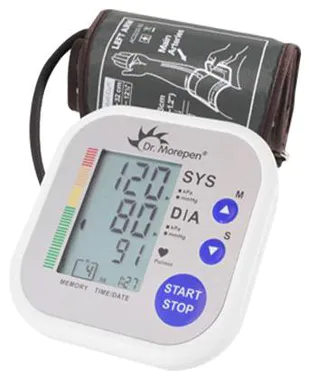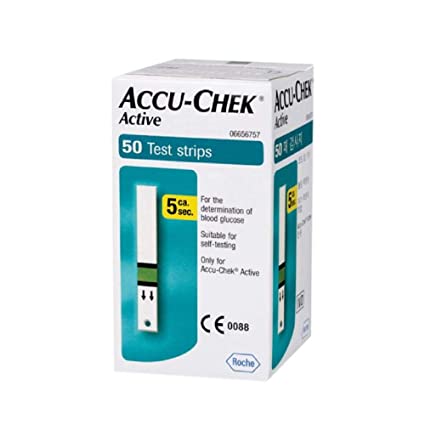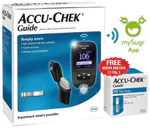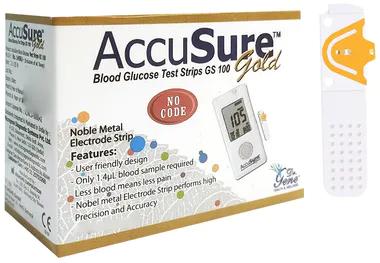These test strips help to measure the concentration of glucose in the blood. It acts as a reliable and convenient self-testing method when used along with a blood glucose monitor. All you need to do is prick your finger and put a drop or two on the test strip and place it in the monitor for results. It helps you to provide quick and reliable results in the comfort of your place. It can be used for both professional (at clinics) as well as personal (at home) use.
It is very simple to use. You have to remove a single diabetes test strip from the box of strips. Insert it into the slot on the glucometer just before you prick your finger. So, it will be easy to add your blood sample onto the strip and get the results. In case of any doubt, read the instructions on the glucometer beforehand.
It is wise to check the test strips before use carefully for better results. Also, always check the expiry date on the test strips and lancets before buying. This is because, the use of outdated strips can give incorrect readings, and thus, serve no purpose. Do wash your hands thoroughly with an antiseptic hand-wash before the test.
Key benefits/uses of Dr. Morepan Gluco One BG-03 Test Strip:
- Helps to measure blood glucose level
- Provides you with information on how your treatment program affects your blood glucose level
- Helps to test blood glucose frequently which in turn allows you to keep your diabetes in control
- Requires only a tiny drop of blood for the test
- Helps you to monitor glucose level at any time and anywhere
- Can be used to keep a regular tab on your sugar levels at your home
Directions for use:
Read the user manual/instruction leaflet carefully before using the strips. However, here is a step-by-step guide you need to follow to check your blood glucose level at home with the help of a glucose monitor.
- The first step is to wash your hands with soap and water, pat dry it with a towel. You can also use an alcohol swab to clean your finger before testing but ensure the fingertip is completely dry before you test.
- Remove the diabetes test strip from the box of strips. Insert it into the slot on the glucometer just before you prick your finger.
- Next, use a clean lancet (a device that holds the needle) or insert a clean needle in the lancet, which can help you to prick the end of your finger.
- Prick the side of your fingertip and wait till blood oozes out. Wipe off the first drop gently and then put a drop or two onto the designated place on a test strip attached to the glucometer.
- Hold a clean cotton pad or gauze on the prick site to stop blood flow. Apply pressure on the area of the insertion until the bleeding stops.
- Your blood glucose level will appear on the meter’s display. Note down your readings as it helps you to monitor your glucose levels from time to time.
- Repeat this procedure every time you test your blood glucose level.
Quick tips for Dr. Morepan Gluco-one BG-03 Test Strip:
- For in-vitro diagnostic use only.
- For accurate results, it is advised to use with Gluco One BG-03 glucose meter.
- Store in a capped vial in a cool and dry space between 4-30 degrees celsius.
- Discard any remaining test strips 3 months after the first opening of the vial.
- The test strip is for single use only, never reuse.
- Refer to the manual for the details before using this product.
- Do not take any medical decision without consulting a doctor.
- Always discuss your results with a registered medical practitioner.
Storage and safety information:
- Store in a cool and dry place.
- Keep away from direct heat and sunlight.
- Each strip is for single use only.
- Keep out of the reach and sight of the children.
- Dispose of the used strips properly.
FAQs related to Dr. Morepan Gluco-one BG-03 Test Strip:
Q. Can blood sugar strips be reused?
No. All the blood glucose test strips are for single use only. Do not ever reuse a test strip as it may not provide you with the appropriate results. It is strongly advised to always discard a test strip after every use.
Q. What are the benefits of glucometers?
It is well known that testing blood glucose levels with a glucometer at home is one of the best ways to manage diabetes. It can help you to test your blood glucose at any time of the day and anywhere. Using a portable glucometer is the best way to test glucose when traveling. Charting of blood glucose levels becomes easy with glucometers especially with devices having memory options to store previous readings. By helping you to keep your blood glucose level in check, blood glucose monitors can help you manage diabetes better.
Q. What is a normal glucometer reading?
According to the American Diabetes Association, the fasting or preprandial blood glucose levels for diabetics should be between 80 – 130 mg/dl and postprandial (1-2 hours after meals) should be less than 180 mg/dl. However, the range mentioned in your glucose monitor may be a little different. So, you need to speak to your doctor to calibrate the results with your lab reports.
Q. How do blood glucose monitors work?
The diabetes devices or glucometers test the amount of glucose in the blood. The test strips present in glucometers contain an enzyme glucose oxidase, which reacts with glucose in the blood and sends the result as an electronic signal, which is displayed on the monitor.
Q. How often should you test your blood glucose with a glucometer?
If you have type 1 diabetes, you may need to check your blood glucose levels several times a day such as pre and post-meals and before and after exercise or as advised by your doctor. Whereas, if you have type 2 diabetes, the frequency of monitoring your sugar levels might be based on the severity of the condition which can be several times a day, once a day, or thrice a week. Hence, talk to your doctor about how often you should test your blood glucose.
 Immunity Boosters
Immunity Boosters
 Diabetes
Diabetes
 Healthcare Devices
Healthcare Devices
 Health Conditions
Health Conditions
 Ayurveda Products
View more
Ayurveda Products
View more
 Immunity Boosters
Immunity Boosters
 Diabetes
Diabetes
 Healthcare Devices
Healthcare Devices
 Health Conditions
Health Conditions
 Ayurveda Products
Ayurveda Products
















